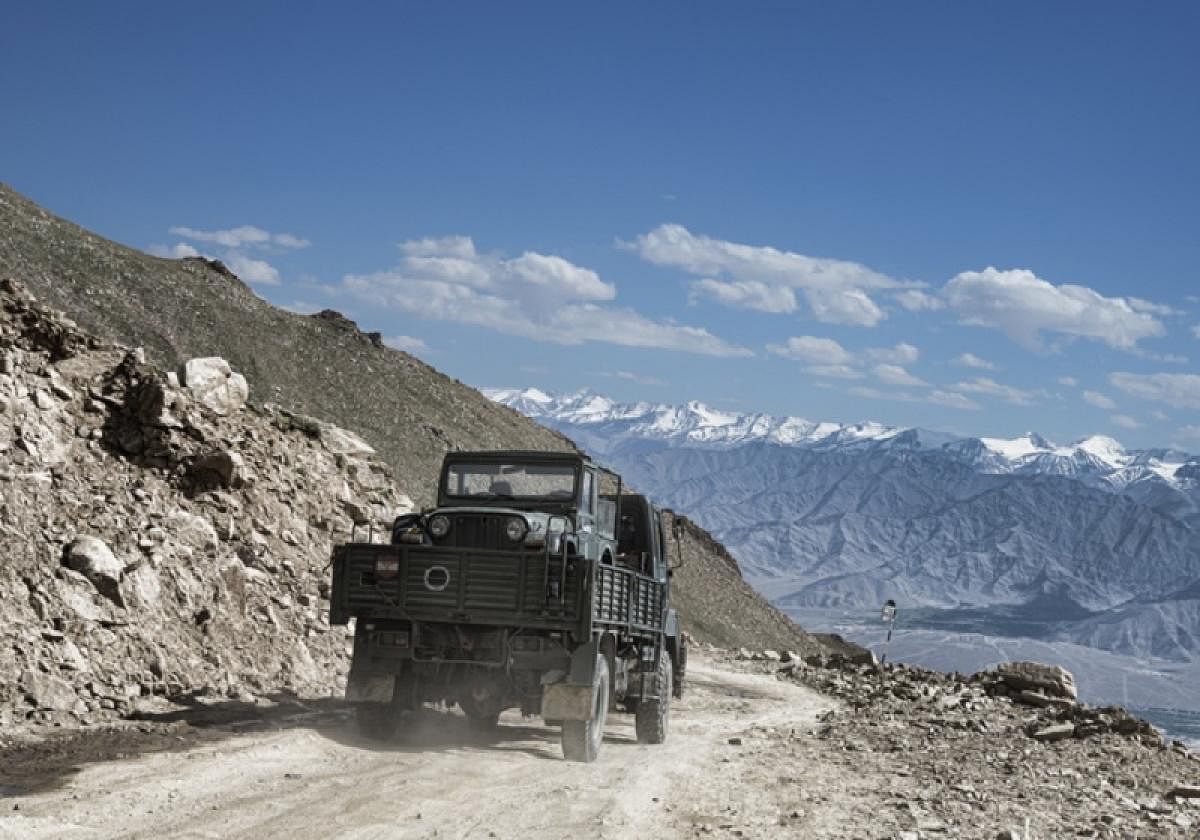
The India-China border after the June 15/16 killing of 20 Indian soldiers now resembles the India-Pakistan border synonymous with violent killings. China has, since the 1962 border conflict with India, periodically attempted to transgress into Indian territory which have led to violent patrol clashes most notably at Nathu La in 1967 and Tulung La in 1975. Clearly, the Chinese People’s Liberation Army aims to test the Indian Army’s resolve to cope with their intrusions.
The latest Chinese transgression in the Galwan Valley, to force its claim to a portion of the area beyond India’s Line of Actual Control (LAC), aims to dominate the area where India has built a 65-metre bridge on the Shyok river. This had reportedly triggered the confrontation with China which claims sovereignty over Galwan Valley.
China’s larger objective is to assert its political stature through military means in Asia to make India subservient to Beijing’s terms. The three Asian countries that concern China are Vietnam, India and Japan. Interestingly, China has settled its land borders with all its 14 neighbours except India.
The last major military standoff between India and China took place at Doklam for 73 days only three years ago. While the military confrontation was only visible over the land borders, there was a maritime dimension to this muscle-flexing with a Chinese naval detachment, which conducted live-fire exercises in the Indian Ocean in July-August 2017. In the 1990s, India’s response to Chinese LAC incursions was to sail a naval flotilla into the troubled South China Sea that rattled Beijing.
Earlier too in the Ladakh sector, they had had a face-off in 2013 in Depsang that lasted 21 days, and in Chumar, Ladakh in 2014 for 16 days. Even in the Doklam crisis of 2017, the Chinese Foreign Ministry spokesperson urged India to abide by the “1959 LAC” which was a Chinese term that India does not accept which implies the line till where China exercised administrative and jurisdictional control.
The reality is that, the LAC then was only a vague concept. In 1960, the officials of both countries met to describe their boundary alignments. It was not a success. After the 1962 war, the Colombo Proposals was that both sides pull back 20 km from the “so called 1959 LAC” – it is not agreed upon by the two countries.
In subsequent efforts after restoration of diplomatic ties between the two countries in 1976, efforts to identify a LAC have been made. This exercise has not met with success. Thus the LAC is neither described or delineated on a map and so cannot be demarcated on the ground. Former Indian diplomat Shivshankar Menon has explained in his book ‘Choices: Inside the Making of India’s Foreign Policy’ that the LAC was “described only in general terms on maps not to scale” by the Chinese.
The LAC is the demarcation that separates India-controlled territory from China-controlled territory. India considers the LAC to be 3,488 km long, while the Chinese consider it to be only around 2,000 km. It is divided into three sectors: the eastern sector which spans Arunachal Pradesh and Sikkim, the middle sector in Uttarakhand and Himachal Pradesh, and the western sector in Ladakh.
Divergent perceptions between New Delhi and Beijing of the LAC creates problems along the border in every sector. Given that these are disputed areas both sides attempt to assert their administrative and military control over them. This results in territorial transgressions in the border areas between India and China.
The historical background to these irredentist claims by China date back to maps of the Qing Dynasty from 1840-1919. Also, Chinese leader Mao Tse Tung’s Five Finger Theory, that Tibet is China’s palm and its five fingers are: Ladakh, Arunachal Pradesh (earlier NEFA or North-East Frontier Agency), Sikkim, Bhutan and Nepal. The other aspect has to with India’s British colonial legacy associated with Sir Henry McMahon after whom the McMahon Line was named in 1914 where the two sides have minor disputes about the positions on the ground as per the principle of the high Himalayan watershed.
While India and China ceased their hostile fire over the Himalayas after the 1962 war, patrol clashes take place at least once a year or more, along the disputed border especially over the last decade. The psyche of the Indian Army, which guards the borders with China, is scarred with the Himalayan humiliation of 1962 which breeds animosity and mistrust towards their Chinese counterparts.
India’s earlier major military clashes with China were in 1967 at Nathu La. At Tulung La, in the Tawang region of Arunachal Pradesh on October 20, 1975, the Chinese ambushed an Assam Rifles patrol without and provocation killing eight soldiers, as a reminder to the 1962 war --- the day that China attacked India.
In 1986-87, the two Asian neighbours India and China deployed militarily, but peacefully at Sumdorung Chu, also in the Tawang region of Arunachal Pradesh, which eventually led to summit diplomacy between then Prime Minister Rajiv Gandhi and Chinese leader Deng Xiaoping in 1988 in Beijing.
Since the two countries signed the 1993 “Agreement on the Maintenance of Peace and Tranquillity along the Line of Actual Control in the India-China Border Areas”, no soldier’s blood has been shed along their disputed border. Despite these, military stand-offs occur due to divergent perceptions over their shared borders, but largely driven by suspicion of the other’s intentions.
India and China have attempted to re-set their bilateral relations through innumerable rounds of diplomatic dialogues during the Cold War through the 1980s and post-Cold War periods since the 1990s but have failed to do so due to trust deficit.
(The writer is former Professor of International Relations and Strategic Studies, Christ Deemed to be University, Bengaluru)